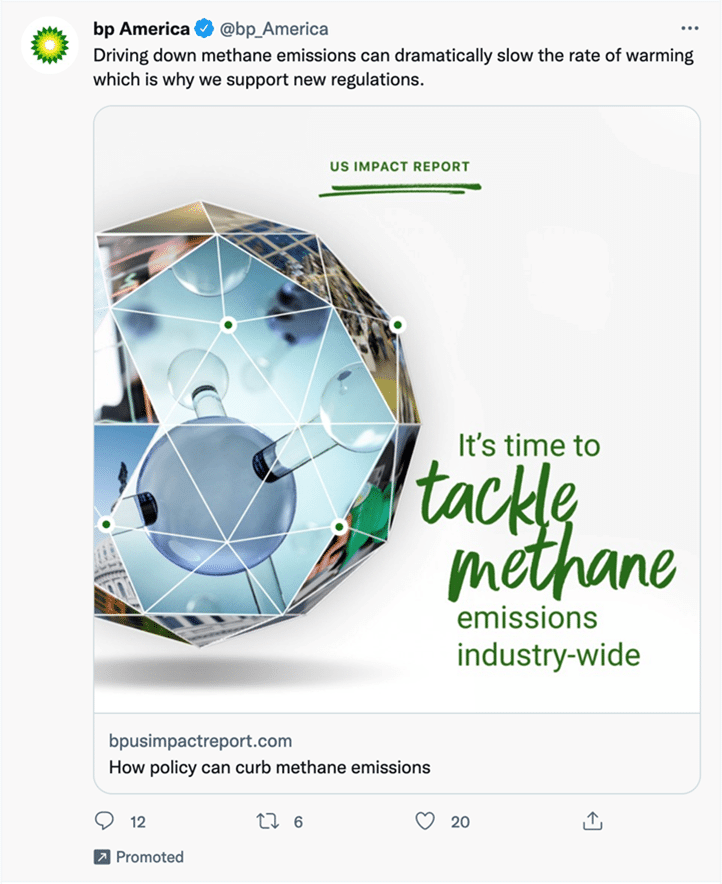Fatal distraction: the problem with the methane pledge
By John Lynch | February 21, 2022
 Natural gas is plentiful in parts of North Dakota, and there is no way to get it out, so most of it is flared off, releasing carbon dioxide into the atmosphere. (Photo by Tim Evanson/Flickr)
Natural gas is plentiful in parts of North Dakota, and there is no way to get it out, so most of it is flared off, releasing carbon dioxide into the atmosphere. (Photo by Tim Evanson/Flickr)
Over the past year, the world has experienced severe heatwaves, wildfires, and drought. As global temperature continues to creep upwards, these events will become more frequent and more extreme. Obviously, humanity needs to make a concerted effort to rapidly bring down greenhouse gas emissions to limit warming to 1.5-2 degrees Celsius above pre-industrial levels, as global leaders agreed to do when they signed the Paris Agreement.
One of the most celebrated commitments at the 26th United Nations Climate Change Conference in Glasgow last November was the pledge by more than 100 countries to reduce methane emissions by 30 percent by 2030. It is undoubtedly a good thing to move from loose statements of ambition towards clearly defined and relatively near-term emission-reduction targets. Methane is a significant contributor to anthropogenic climate change, and stringent emission limits will be necessary to keep warming to 1.5-2 degrees Celsius. But the priority must still be stopping carbon dioxide emissions. If action on methane detracts from efforts to limit carbon dioxide emissions, then it will confound, rather than support, these temperature targets.
In making the case for prioritizing methane emissions reductions, a number of environmental organizations and prominent commentators have highlighted how rapidly the climate benefits of reducing methane emissions would be seen. Methane is a relatively short-lived greenhouse gas, with an atmospheric lifetime of around a decade. This means that if methane emissions are reduced, then the amount of methane in the atmosphere will rapidly decline, and much of the warming currently caused by the gas can be reversed. In contrast, carbon dioxide is an extremely long-lived gas, with a significant share of today’s emissions expected to persist in the atmosphere for thousands of years. These different dynamics have led experts like Inger Anderson, executive director of the United Nations Environment Programme, to suggest that, for example, “cutting methane is the strongest lever we have to slow climate change over the next 25 years.”
Ursula von Der Leyen, president of the European Commission, said “cutting back on methane emissions is one of the most effective things we can do to reduce near-term global warming and keep 1.5 degrees Celsius. It is the lowest-hanging fruit.”
But if global leaders exhaust their deal-making on low-hanging fruit, it could detract from a far more important goal. In short, methane could become a fatal distraction.
Currently, the world is around 1.1 degrees Celsius hotter than it was in 1850-1900. Carbon dioxide emissions have been responsible for approximately .75 degrees Celsius of warming, the single largest individual contributor. Methane has had the second biggest effect, responsible for around 0.5 degrees Celsius.
If you noticed those numbers don’t add up, you’d have been correct. Aerosol pollution from burning coal, for example, has a cooling effect, temporarily masking some warming, which is how these two gases alone can generate over 100 percent observed warming. As societies start to reduce fossil fuel combustion, or just make power stations slightly less dirty, aerosol emissions will fall and this hidden warming will be unleashed, which makes achieving the Paris Agreement targets even more challenging than they may first appear.
It is clear that carbon dioxide and methane are both major contributors to global warming, and both contribute significantly to the climate damages we already experience. In terms of mitigation strategy, however, the gulf in atmospheric lifetime between the two gases results in pronounced long-term differences if global leaders prioritize emission reductions for one or the other. It is necessary to interrogate what either strategy would result in over both the short and long term. (Note that while I will be considering anything more than a few decades as ‘longer-term’ for this piece, it remains rather short-term compared to the total duration of carbon dioxide’s climate impacts!)
The relative permanence of carbon dioxide in the atmosphere means that reducing emissions merely slows the rate of continued temperature increase, until the world gets to net-zero carbon dioxide emissions, at which point the temperature impacts are expected to stabilize. Every ton of carbon dioxide emitted cumulatively adds further warming. If carbon dioxide emission reductions are delayed, global temperature will increase by however much carbon dioxide is emitted in the interim, and it will take active carbon removal to limit warming to levels achievable had emissions been cut earlier.
It is worth noting that most greenhouse gas removal technologies are still in the early stages of development and expected to take decades for deployment to scale up. It will take a monumental effort to achieve the amount of carbon dioxide removal necessary to balance residual emissions and reach net-zero, let alone net-negative emissions.
Meanwhile, carbon dioxide-induced warming is increasing by at least 0.1 degree Celsius per decade and will continue to do so until the world dramatically brings down emissions. It is not even clear that carbon dioxide emissions have peaked: In 2020, the world saw the first significant downward movement in annual fossil emissions due to COVID-19, but in 2021, emissions appear to have rebounded almost fully back to 2019 emission levels (which was the highest year ever). There is a very real possibility that emissions in 2022 will be even greater, setting a new record as the economic recovery from the pandemic continues.
Methane concentrations in the atmosphere are also rising, a particularly concerning trend because the reasons are only partially understood, although our increasing emissions certainly play a major role. And methane is frequently described as more potent than carbon dioxide, and indeed, on a per molecule basis, methane does indeed exert a much stronger warming impact. But this only tells part of the story. Methane’s short lifetime means that it does not act cumulatively; the warming from methane only really depends on the last few decades’ worth of emissions. So as strong as individual methane emissions are, their impacts do not persist and stack upon each other decade after decade, century after century, as is the case with carbon dioxide. The reversibility of methane’s warming also means that if methane emission reductions are delayed, the world will still see more or less the same temperature reduction whenever emissions do come down.
These distinct dynamics, coupled with the scale of anthropogenic carbon dioxide emissions and the level of action needed to get to net-zero anywhere nearly quickly enough to stay below 1.5 degrees Celsius, reveal why this focus on the strong “near-term lever” is misguided.
Imagine that the methane emission-reduction pledge is a success, bringing methane emissions down 30 percent compared to today. The maximum benefit this will give is reversing 30 percent of the 0.5 degree Celsius warming from methane, so around 0.15 degrees Celsius. (In reality the warming undone will be somewhat less than this due to slower components of the climate response.) It would certainly be a good thing if the world was 0.15 degrees Celsius cooler, but this benefit would be negated within a couple of decades, and surpassed thereafter, if carbon dioxide-induced warming increased at current rates. Slowing this rate of temperature increase requires a substantial cut to carbon dioxide emissions. And even then, in any scenario short of net-zero carbon dioxide emissions, whatever gains might be achieved from reducing methane will continue to be eroded by the ever-increasing warming from carbon dioxide, just more slowly.
Any plans to reduce methane emissions must therefore be accompanied by a feasible, relatively near-term route to achieving net-zero carbon dioxide emissions, if it is to play any part in achieving our temperature goals. Global leaders have yet to deliver that, and their focus on the near-term benefits of cutting methane emissions hides a potential trade-off for increased warming, essentially indefinitely, if it means easing efforts on carbon dioxide. In terms of keeping warming to 1.5 degrees Celsius (or 2 degrees, or indeed having any intention to stop the planet becoming ever hotter and hotter) methane is quite clearly of secondary importance compared to the elimination of carbon dioxide emissions. The context of going for the “low-hanging fruit” in the emission reduction strategy raises further alarm bells here.
One of the simplest means to reduce methane emissions is to fix leaky gas pipes (natural gas simply being fossil methane), and the US government, among others, has signalled it will imminently start enforcing inspections and maintenance checks on methane pipelines. With novel technologies like laser and satellite methane detection helping identify leaks, this is certainly a plausible, near-term way to bring down methane emissions. But methane is being pumped around in the first place because it is a valuable commodity, sold to generate energy. Methane prices surged last year and are expected to remain high. So it is in fossil companies’ own interests to fix these leaks anyway. They can make great fanfare about reducing greenhouse gas emissions while supporting their bottom line and avoiding the much harder but more fundamental task of completely moving away from burning fossil fuels. Forgive me if this seems cynical, but one does start to ask questions when major fossil fuel companies start advocating for some specific emission regulations.

Furthermore, while using natural gas for energy generation is undoubtedly an improvement over coal, it is still a fossil fuel. As highlighted above, to have any chance of limiting warming to 1.5-2 degrees Celsius, it is necessary to completely transition away from fossil fuels within decades. Around 35 percent of anthropogenic methane emissions are due to fossil fuel extraction and use, so decarbonization would be expected to eliminate most of these emissions even without specific methane targets. In other words, a pledge to reduce methane emissions by 30 percent is the bare minimum that could be expected as part of necessary climate action anyway, but putting this up-front without actually spelling out a timeline for total decarbonization gets things backwards, distracting from the real goal.
The world needs a root-and-branch transformation of energy generation. Gathering the low-hanging fruit will not be enough to save humanity from climate crisis.
Together, we make the world safer.
The Bulletin elevates expert voices above the noise. But as an independent nonprofit organization, our operations depend on the support of readers like you. Help us continue to deliver quality journalism that holds leaders accountable. Your support of our work at any level is important. In return, we promise our coverage will be understandable, influential, vigilant, solution-oriented, and fair-minded. Together we can make a difference.















Because of the masking effect of sulfate aerosols, even dramatic cuts to CO2 emissions won’t prevent us from hitting dangerous tipping points and initiating harmful climate feedback mechanisms. That’s why cutting methane is essential. It’s only a part of the puzzle, but it’s a crucial piece of the puzzle.
I’ve only read a few Bulletin of the Atomic Scientists posts this evening—eleven tabs left to go—but it already seems to me that some of your writers aren’t fully conversant with their subject matter, or not careful with their facts, or that they are trying to “dumb it down.” Don’t. “Methane is a relatively short-lived greenhouse gas, with an atmospheric lifetime of around a decade. This means that if methane emissions are reduced, then the amount of methane in the atmosphere will rapidly decline…and much of the warming currently caused by the gas can be reversed…” The half life of… Read more »